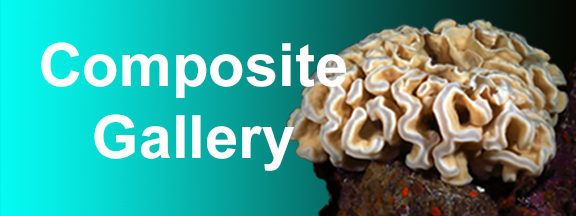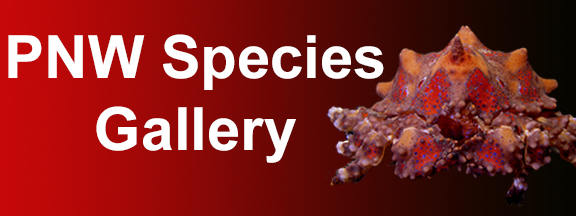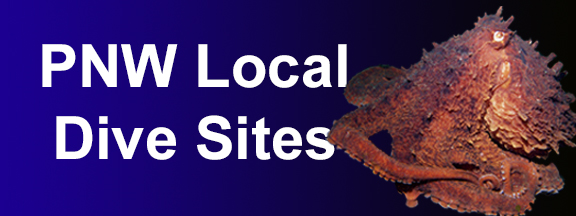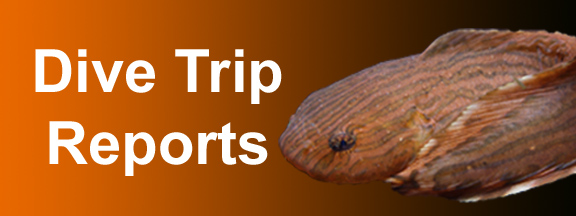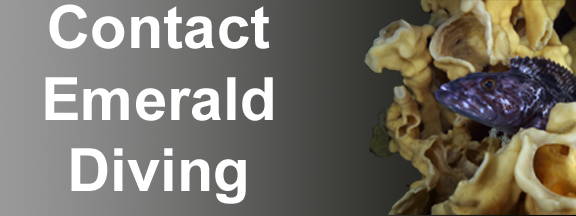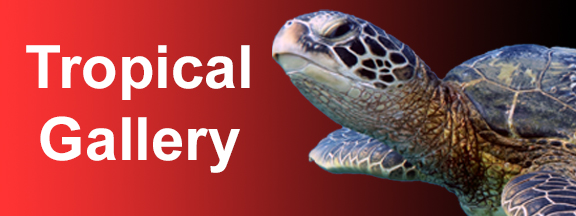

I visited the Red Sea in 2003 – it was my first liveaboard experience. As I am a fanatical marine life enthusiast, I booked my 2003 trip to Egypt’s southern reefs aboard a brand new dive boat, the Blue Pearl. Like many things in Egypt that don’t go as planned, the Blue Pearl’s did not complete her sea trials in time for my trip. The company I booked my trip through put me aboard a different vessel that was to spend 3 days amongst Egypt’s southern reefs, and 3 days diving the northern wrecks and reefs.
On the second day of that trip, we arrived at the Brother Islands. We were scheduled to spend two days diving the Brothers. After only one day of absolutely spectacular diving, the captain decided to pull anchor and head north to the wrecks – because the weather was too good (yeah, that’s right – the weather was too nice). Although there are some decent dives up north, there were quite a few stinkers as well. Even the best of the northern wreck diving paled in comparison to the Brothers. I have been itching to get back to Egypt’s southern reefs ever since. That opportunity presented itself this May when I booked a business trip to Europe.
Safety
My major concern travelling to Egypt was safety. Since the revolution in 2011, Egypt has not been considered a safe place for US citizens to travel by the US State Department, although the resort towns along the Red Sea are considered safer than Cairo or going inland. Outside various routine police roadside check points between Hurghada and Marsa Alam, I experienced absolutely no reason for concern during my trip. At no point did I feel unsafe of threatened at all.
There are blatant signs of Egypt’s hampered economy under the new regime, however. Prior to the revolution, Egypt was investing heavily in housing and resort locations along the shore of the Red Sea. Further investment abruptly stopped with the revolution, resulting in hundreds of semi-completed buildings between Hurghada and Marsa Alam. The abandoned concrete buildings in various stages of completion combined with no landscaping of the arid terrain and garbage strewn everywhere have transformed parts of the Egyptian Red Sea coastline into what looks like a nuclear apocalyptic wasteland. So sad.
Getting Here
Getting to Maras Alam from Seattle is a chore. Start with a 10 hour flight from Seattle to Frankfurt, a 2 hour layover, then a 4 hour flight from Frankfurt to Cairo, then a three hour layover, and finally a one hour flight from Cairo south to Hurghada. But wait – there’s more; a three hour car ride south from Hurghada to Marsa Alam, which is where the boat is moored. It’s about 24 hours, door to door.
Despite dealing with the rigors of extended travel, one of the bright spots was setting up this trip with the Aggressor travel department. The person I worked with, Lisa, was awesome. She was very patient with me even though my itinerary changed several times, and took care of all hotels and transfer in addition to getting me the best airfares. Huge kudos to Lisa at Aggressor travel.
On the second day of that trip, we arrived at the Brother Islands. We were scheduled to spend two days diving the Brothers. After only one day of absolutely spectacular diving, the captain decided to pull anchor and head north to the wrecks – because the weather was too good (yeah, that’s right – the weather was too nice). Although there are some decent dives up north, there were quite a few stinkers as well. Even the best of the northern wreck diving paled in comparison to the Brothers. I have been itching to get back to Egypt’s southern reefs ever since. That opportunity presented itself this May when I booked a business trip to Europe.
Safety
My major concern travelling to Egypt was safety. Since the revolution in 2011, Egypt has not been considered a safe place for US citizens to travel by the US State Department, although the resort towns along the Red Sea are considered safer than Cairo or going inland. Outside various routine police roadside check points between Hurghada and Marsa Alam, I experienced absolutely no reason for concern during my trip. At no point did I feel unsafe of threatened at all.
There are blatant signs of Egypt’s hampered economy under the new regime, however. Prior to the revolution, Egypt was investing heavily in housing and resort locations along the shore of the Red Sea. Further investment abruptly stopped with the revolution, resulting in hundreds of semi-completed buildings between Hurghada and Marsa Alam. The abandoned concrete buildings in various stages of completion combined with no landscaping of the arid terrain and garbage strewn everywhere have transformed parts of the Egyptian Red Sea coastline into what looks like a nuclear apocalyptic wasteland. So sad.
Getting Here
Getting to Maras Alam from Seattle is a chore. Start with a 10 hour flight from Seattle to Frankfurt, a 2 hour layover, then a 4 hour flight from Frankfurt to Cairo, then a three hour layover, and finally a one hour flight from Cairo south to Hurghada. But wait – there’s more; a three hour car ride south from Hurghada to Marsa Alam, which is where the boat is moored. It’s about 24 hours, door to door.
Despite dealing with the rigors of extended travel, one of the bright spots was setting up this trip with the Aggressor travel department. The person I worked with, Lisa, was awesome. She was very patient with me even though my itinerary changed several times, and took care of all hotels and transfer in addition to getting me the best airfares. Huge kudos to Lisa at Aggressor travel.
Dive Reports
Emerald Diving
Explore the coastal and inland waters of
Washington and BC
Explore the coastal and inland waters of
Washington and BC
Emerald Diving
Explore the coastal and inland waters of
Washington and BC
Explore the coastal and inland waters of
Washington and BC
Red Sea - May 2017
EgyptianSouthern Reefs
EgyptianSouthern Reefs
Why Aggressor
There are dozens, if not hundreds of liveaboards dive boats working the Red Sea, spanning all sorts of price ranges and all promoting why they are the best. Rather than saving a few hundred dollars and taking my chances in the Red Sea liveaboard crapshoot, I decided to go with a sure thing. Aggressor boats all have to adhere to certain quality and service standards. Another factor was the Red Sea Aggressor provides 4 dives a day at the Brothers and Daedalus. Most (if not all) other boats only offer 3 dives a day at these locations.
Cost of the trip (7 days) was $1300 – an incredible value. It was normally $2500, but I suspect the heavy decline in Egyptian tourism due to the revolution has forced dive operators to drop prices substantially. Extra costs - $100 for Nitrox, port fees of about $150, and a well deserved crew tip. The $1300 price was actually substantially less than I paid in 2003 for a 7 day dive package.
The Boat
There are dozens, if not hundreds of liveaboards dive boats working the Red Sea, spanning all sorts of price ranges and all promoting why they are the best. Rather than saving a few hundred dollars and taking my chances in the Red Sea liveaboard crapshoot, I decided to go with a sure thing. Aggressor boats all have to adhere to certain quality and service standards. Another factor was the Red Sea Aggressor provides 4 dives a day at the Brothers and Daedalus. Most (if not all) other boats only offer 3 dives a day at these locations.
Cost of the trip (7 days) was $1300 – an incredible value. It was normally $2500, but I suspect the heavy decline in Egyptian tourism due to the revolution has forced dive operators to drop prices substantially. Extra costs - $100 for Nitrox, port fees of about $150, and a well deserved crew tip. The $1300 price was actually substantially less than I paid in 2003 for a 7 day dive package.
The Boat
We spent two full days at the Brothers, which consists of two islands – Big Brother and Little Brother. Both islands are little more than a barren flat plateaus the rise maybe 40 feet above the Red Sea. Big Brother Island is approximately 500 yards long and has a manned lighthouse. It also is home to two famous wrecks – the Aida and Numidia. Little Brother is just over a mile from Big Brother and about 200 yards long.
The reason these islands offer such prolific marine life is they mark where the Red Sea drops to depth of over 4000 feet. The Red Sea was formed by the African and Asian continents pulling away from each other and forming a trench – a very deep trench that is over 9000 feet deep in places. Bordering on the edge of the trench, the Brother Islands are subjected to upwellings of crystal clear and nutrient rich waters that create the basis for lush reef life.
Diving the Brothers is very special. I had a great encounter with an oceanic whitetip shark when diving here in 2003. On my latest trip, we spied a thresher shark while 100 feet deep on the Numidia wreck and also had a school of five Napolian wrasses join us for part of the dive. These sighting aside, the hard corals, quantity and diversity of reef fish, hawksbill sea turtles, and soft corals are reason enough to visit the Brother Island. The shallow reef that extends to the northeast of Big Brother Island is incredible. We ended up on this shallow reef after one dive – and I could have done the entire dive here in 20 feet of waters. It was just beautiful.
The reason these islands offer such prolific marine life is they mark where the Red Sea drops to depth of over 4000 feet. The Red Sea was formed by the African and Asian continents pulling away from each other and forming a trench – a very deep trench that is over 9000 feet deep in places. Bordering on the edge of the trench, the Brother Islands are subjected to upwellings of crystal clear and nutrient rich waters that create the basis for lush reef life.
Diving the Brothers is very special. I had a great encounter with an oceanic whitetip shark when diving here in 2003. On my latest trip, we spied a thresher shark while 100 feet deep on the Numidia wreck and also had a school of five Napolian wrasses join us for part of the dive. These sighting aside, the hard corals, quantity and diversity of reef fish, hawksbill sea turtles, and soft corals are reason enough to visit the Brother Island. The shallow reef that extends to the northeast of Big Brother Island is incredible. We ended up on this shallow reef after one dive – and I could have done the entire dive here in 20 feet of waters. It was just beautiful.
The Red Sea Aggressor is a 120’ custom built dive vessel. Like most of the Red Sea liveaboard dive boats, her hull is of wooden construction. She was originally built in 2003, but underwent an extensive retrofit in 2014 when she became part of the Aggressor Fleet to bring her up to Aggressor specs. She has twin diesels that allow her to cruise easily around 10 knots, twin generators, 4 air compressors, an air bank, and a Nitrox membrane system. She also has a sea water desalinization system, but the water from this system is not potable.
She accommodates up to 20 divers (we had 15) and a crew of up to 12. The standard cabins below-deck are small, but well-appointed, modern, clean, and have their own AC and bathroom/shower. The dive deck and dining/living room are on the main deck, standard berths below deck, and upgraded berths and sun deck above the main deck. The Red Sea Aggressor even has a hot tub on the front deck.
The Red Sea Aggressor has a decent two level dive deck. There is ample space unless your dive station is one of the four corner spots on the lower deck (which is where I was stationed) – then things get a little cramped when kitting up. Fortunately we dived in two different groups, so this split us up somewhat. There are two camera tables, each offering compressed air and plenty of dry storage underneath for charging batteries and storage.
The Red Sea Aggressor has great lines, but is not overly extravagant finish-wise. She is well maintained, and the pride of the crew shows through. Everything is clean, well painted, modern looking, and works properly. The only knock I have on this boat is the air conditioning units in the standard rooms below deck. Each room has its own air conditioning compressor, which is great. However, the compressor sounds like a loud diesel engine when starting up. It is so loud, you can feel the vibration when laying in the bunk. Not a big deal during the day, but it often woke me up at night. It took some time to get used to.
The Crew
Fantastic. Hardworking. Prideful. Competent. Not all the crew seemed overly comfortable speaking English. But those that did were very social and engaging. Regardless of their comfort with English, every one of the crew left me with the impression they really loved and appreciated their job. They insisted on helping us at every turn, even if we did not want help. After each dive, we were met with a cool drink and warm towel. The crew is all Egyptian, as it should be, and they all served as excellent examples of Egyptian hospitality and service. Some of the crew has been working together 20 years, and it showed. They didn’t miss a beat. In particular, are two stewards who looked after the cabins and dining room were exceptional.
The Food
Again, incredible. Our Egyptian chef took a lot of pride in his cooking, and he should. He cooked a wide variation of dishes offering two or even three different main courses for lunch and dinner, and his presentation was even better than the food (and that is saying something). Warm breakfast after the first dive each morning was cooked to order. Again, major kudos to Chef Hussein.
The Diving
The offshore southern reefs of the Red Sea offer the best overall diving I have experienced to date. The combination of outstanding visibility (150+ feet), incredible hard coral formations, walls, wrecks (Numidia and Aida), colorful soft corals, huge gorgonians, ever-present clouds of beautiful anthias, and a treasure drove of colorful and diverse reef fish combined that with opportunities to see hammerheads, grey reef sharks, thresher sharks, oceanic white tips, and manta rays – and you have an incredible diving experience. Oh, and of course close encounters with hawksbill turtles and large Napolian wrasse. The Red Sea does not have the constant in-your-face pelagic action that Tiger Beach in the Caribbean offers with sharks, but it has the color, swarms of fish, diversity, and amazing invertebrates. What an incredible place!
The two main attractions on the Southern Egyptian Red Sea itinerary are the Brother Islands and Daedalus Reef.
She accommodates up to 20 divers (we had 15) and a crew of up to 12. The standard cabins below-deck are small, but well-appointed, modern, clean, and have their own AC and bathroom/shower. The dive deck and dining/living room are on the main deck, standard berths below deck, and upgraded berths and sun deck above the main deck. The Red Sea Aggressor even has a hot tub on the front deck.
The Red Sea Aggressor has a decent two level dive deck. There is ample space unless your dive station is one of the four corner spots on the lower deck (which is where I was stationed) – then things get a little cramped when kitting up. Fortunately we dived in two different groups, so this split us up somewhat. There are two camera tables, each offering compressed air and plenty of dry storage underneath for charging batteries and storage.
The Red Sea Aggressor has great lines, but is not overly extravagant finish-wise. She is well maintained, and the pride of the crew shows through. Everything is clean, well painted, modern looking, and works properly. The only knock I have on this boat is the air conditioning units in the standard rooms below deck. Each room has its own air conditioning compressor, which is great. However, the compressor sounds like a loud diesel engine when starting up. It is so loud, you can feel the vibration when laying in the bunk. Not a big deal during the day, but it often woke me up at night. It took some time to get used to.
The Crew
Fantastic. Hardworking. Prideful. Competent. Not all the crew seemed overly comfortable speaking English. But those that did were very social and engaging. Regardless of their comfort with English, every one of the crew left me with the impression they really loved and appreciated their job. They insisted on helping us at every turn, even if we did not want help. After each dive, we were met with a cool drink and warm towel. The crew is all Egyptian, as it should be, and they all served as excellent examples of Egyptian hospitality and service. Some of the crew has been working together 20 years, and it showed. They didn’t miss a beat. In particular, are two stewards who looked after the cabins and dining room were exceptional.
The Food
Again, incredible. Our Egyptian chef took a lot of pride in his cooking, and he should. He cooked a wide variation of dishes offering two or even three different main courses for lunch and dinner, and his presentation was even better than the food (and that is saying something). Warm breakfast after the first dive each morning was cooked to order. Again, major kudos to Chef Hussein.
The Diving
The offshore southern reefs of the Red Sea offer the best overall diving I have experienced to date. The combination of outstanding visibility (150+ feet), incredible hard coral formations, walls, wrecks (Numidia and Aida), colorful soft corals, huge gorgonians, ever-present clouds of beautiful anthias, and a treasure drove of colorful and diverse reef fish combined that with opportunities to see hammerheads, grey reef sharks, thresher sharks, oceanic white tips, and manta rays – and you have an incredible diving experience. Oh, and of course close encounters with hawksbill turtles and large Napolian wrasse. The Red Sea does not have the constant in-your-face pelagic action that Tiger Beach in the Caribbean offers with sharks, but it has the color, swarms of fish, diversity, and amazing invertebrates. What an incredible place!
The two main attractions on the Southern Egyptian Red Sea itinerary are the Brother Islands and Daedalus Reef.



Southern Egyptian Red Sea
Big Brother Island
Daedalus Reef at dusk
Little Brother Island
Daedalus Reef is equally as striking, with the added excitement of routine manta and hammerhead sightings. We targeted hammerheads on about half the dives by hanging in the blue a couple hundred feet off the wall in 70-100 feet of water and just wait. On most occasions a few scalloped hammerheads would come within about 30 feet of us to check us out. On one occasion we dropped into a school of a dozen hammerheads at 120 feet. After hanging with the hammers for the first 10 minutes of the dive, we would head to the reef (which is a relatively steep wall) and take in the beauty, color, and diversity it offered. Even while on the reef we had several fly-bys by lone or paired hammerheads and mantas. We also had a Napolian wrasse spend over 30 minutes with us on one dive – it leisurely followed us as we drifted along the top of the wall.


Daedalus Reef also harbors Anemonefish City. Anemonefish City is dense colony of anemones that carpet part of a wall on the north end of the reef. It starts in about 10 feet of water where it drops down about 20 feet and expanses about 30 feet in width. Dozens of families of Red Sea anemonefish live amongst these anemones, along with nearby populations of scalefin anthias and other reef fish. Anemonefish City is just a cauldron of continual colorful activity that I could watch for hours – it is honestly one of the most beautiful underwater spectacles I have ever witnessed.
The only downside is Daedalus and the Brothers are heavily trafficked by dive liveaboards. We had 8 to 11 other liveaboards at each site – each catering to approximately 20 divers. You can do the math – that is a LOT of divers. The crew does their best to spread things out and time dives to minimize congestion, but running into other groups of divers is inevitable.
Elphinstone Reef is also definitely worth mentioning. We dove here on this last day, and only did one mild drift dive on the reef, and it was spectacular. Like the Brothers and Daedalus, this reef rises abruptly from the depths and creates a sheer wall. The top of the reef comes within about 5 feet of the surface, but does not break the surface – at least not on high tide. Like the other sites, visibility was astounding and the wall is just covered with soft corals, dense schools of scalefin anthias, incredible numbers of reef fish, and fantastic hard coral formations. The shallow section above the reef is also rife with life as we watched schools of stripped butterfly fish, halfbeaks, and orange-spine surgeon fish hunt. This site is within striking distance of the land based dive charters, so it can get crowded here as well.







Conclusion
The Red Sea Aggressor offers a world class diving experience in a very unique part of the world. The travel is a bear, and all the sites are heavily trafficked by dive tourism – but the experience is tremendous. Jacques Cousteau rated the Red Sea the best diving on the planet at one time– probably back in the 1970s. Our Cruse Director on the Red Sea Aggressor (Muhmoud) stated that in his 25+ years of diving, he has seen a 90% degradation in fish populations. Muhmound’s father, also a diver, made the same claim for the 25 years prior. Even with that, the Red Sea is still an amazing spectacle – I can’t even imagine how amazing it must have been in the 1960 when the first scuba divers began exploring some of these amazing offshore reefs. I do know this: If I lived in Europe, I would be visiting Daedalus Reef and the Brother Islands every year.
The Red Sea Aggressor offers a world class diving experience in a very unique part of the world. The travel is a bear, and all the sites are heavily trafficked by dive tourism – but the experience is tremendous. Jacques Cousteau rated the Red Sea the best diving on the planet at one time– probably back in the 1970s. Our Cruse Director on the Red Sea Aggressor (Muhmoud) stated that in his 25+ years of diving, he has seen a 90% degradation in fish populations. Muhmound’s father, also a diver, made the same claim for the 25 years prior. Even with that, the Red Sea is still an amazing spectacle – I can’t even imagine how amazing it must have been in the 1960 when the first scuba divers began exploring some of these amazing offshore reefs. I do know this: If I lived in Europe, I would be visiting Daedalus Reef and the Brother Islands every year.













